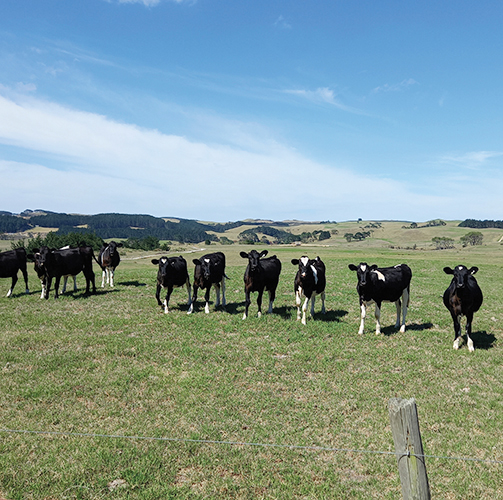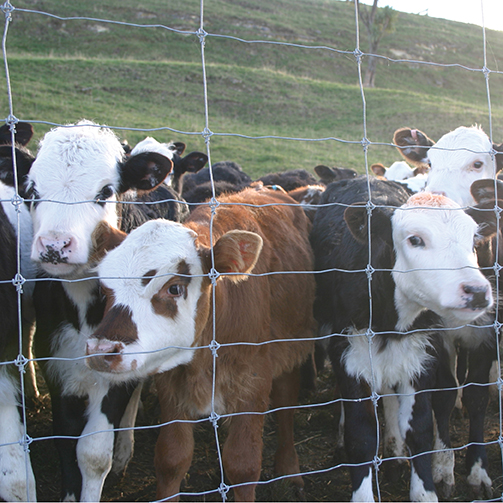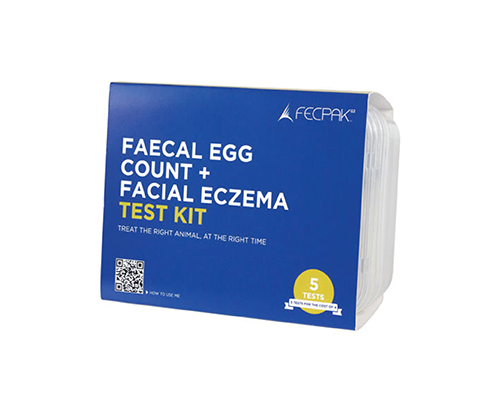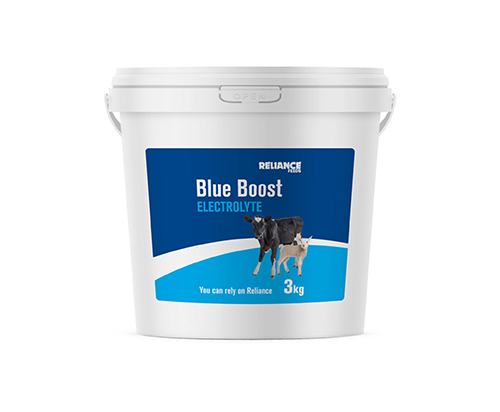

The Calf Experts: Summer Watch
Words by Karen Fraser – Farmlands Technical Specialist
Your newborn calves have made it through spring, so what's next? Follow this guide to keep them healthy over summer.
As spring-born calves head into their first summer, their wellbeing and growth can face significant challenges. This period is crucial for their development. Poor management can impact their growth rates, health and future productivity. Addressing these challenges effectively is essential for meeting growth targets and ensuring long-term success in dairy and beef production.
Here's a guide to navigating the hurdles of a calf's first summer:
As grasses go reproductive in early summer, this diet change can trigger a B1 deficiency. Elevated levels of sulphur in the grass can also contribute. A lack of B1 can also lead to swelling of the brain. Signs include disorientation, head pressing or blindness. As soon as you suspect B1 deficiency, contact your vet. Quick treatment can turn cases around. Water access Ensure calves have constant access to clean, fresh water. Troughs should be positioned so that calves can drink comfortably with their heads.
B1 Deficiency
As grasses go reproductive in early summer, this diet change can trigger a B1 deficiency. Elevated levels of sulphur in the grass can also contribute. A lack of B1 can also lead to swelling of the brain. Signs include disorientation, head pressing or blindness. As soon as you suspect B1 deficiency, contact your vet. Quick treatment can turn cases around.
Water access
Ensure calves have constant access to clean, fresh water. Troughs should be positioned so that calves can drink comfortably with their heads down. Repair or raise shingle around troughs if necessary. When feeding supplements, have them positioned closer to the water supply so no long walks are required.
Nutritional Requirements
Ensure calves are well set up before summer by feeding a high-quality calf feed until calves reach at least 120kg. Keep lighter calves in smaller mobs on your home block and on calf feed until they reach target weights. If calves are struggling and not receiving adequate protein and energy, it can predispose them to diseases.
Offering quality pasture over the summer months is challenging and calves grazing dry stalky pastures cannot physically eat enough to reach the protein and energy they require to grow optimally. Monitor pasture conditions regularly and be prepared to supplement the diet if necessary. When pasture quality is poor, consider feeding high-quality silage instead of hay, which has limited nutritional value. Supplementing with a well-balanced calf feed can help bridge nutritional gaps, providing proteins, energy, vitamins, trace elements, and minerals.
Weigh Calves Regularly
Monitor daily gains via weighing. This should happen two weeks after relocation and weaning, then repeat every four to six weeks thereafter. Through their first summer, calves need to be gaining at least 0.75kg/day in weight. For an example of how to achieve this; a 150kg calf consuming approximately 4.8kg dry matter each day, would need to be on a diet of at least 18 percent crude protein and 10.5 MJ/ME (on a dry matter basis) to achieve a 0.75kg daily weight gain. This is very optimistic in a dry summer from pasture alone.
Looking at historical pasture samples we have seen over summer, on average grass is delivering only 9 MJ/ME and 13 percent crude protein per kg dry matter, so there is often a nutritional gap here. Group calves doing 0.4kg – 0.6kg together and priority feed, putting them back on a calf feed if required depending on feed quantity and quality on the farm. If calves are only doing 0.3kg a day or under, this indicates they are in maintenance mode and are not growing and they will likely have health challenges. They should be put back onto a quality calf pellet.


Support during yarding or travel
Avoid yarding or moving stock in the heat of the day. Pre-condition calves using rehydration and fibre before and after to avoid acidosis and gut inflammation. We recommend Reliance Blue Boost Electrolyte. Get animals through the yards quickly and use SealesWinslow Cattle Young Stock Blocks in the yards and paddocks, making sure there is ample water.
Facial Eczema
Monitor your farms for Facial Eczema spores if you are in an at-risk area. Zinc can be used to protect against facial eczema. Zinc must be delivered to the animals at the time of ingestion of spores. Using a zinc water treatment can be hit or miss and is not recommended for youngstock. Slow-release zinc oxide bolus gives four weeks’ coverage, so may need to be repeated. Using NRM MultiFeed Nut + zinc can be a great option as it’s a very targeted way of getting zinc into animals. Don’t feed zinc for facial eczema prevention longer than 100 days without consulting a vet.
Other Summer Tips
- Take faecal samples to help with monitoring parasite burdens and to check for diseases such as yersinia and salmonella. FECPAKG2 can be used to test for parasites, and is available through Farmlands - it can test for facial eczema spores too. For bacteria and protozoa, test faecal matter through your vet.
- Take 10 mins to observe each mob for unusual behaviour, slow in movement, or any health issues like scouring, drooling, eye ulcers (pink eye).
- Offer plenty of room for weaners to feed at same time when using supplementary feeds.
- Do not wait until the next weighing to flick out a struggling calf – put back on calf pellets if necessary.
- When you notice a sad calf, use electrolytes immediately. Reliance Blue Boost is recommended.
- If scouring, isolate and faecal test for things like yersinia. Yersinia is a bacteria that lives in the gut of healthy animals but as soon as a calf is exposed to compounding stress they can succumb to it. It requires an antibiotic from your vet.
- Regularly offer fresh breaks and don’t graze calves to low residuals. Daily breaks is best practice, so calves learn to eat everything on offer.
- Put struggling calves back onto high quality calf feed like the NRM, Reliance and SealesWinslow 20 percent protein feeds.
- When larger volumes of supplement is needed during a time of significant feed deficit, consider using specialised blends that are well balanced and custom designed around what your youngstock need at that time. Your Farmlands Nutrition Specialist can help here.
By understanding calves nutritional needs, managing pasture effectively and ensuring adequate hydration, you can support optimal growth and health. Regular monitoring, adjusting diets as needed and keeping detailed records will help you make informed decisions and maintain a successful feeding program.
FEATURED PRODUCTS



FECPAKG2 5 Test Kit
The 5 FECPAKG2 test kit pack is great value and is a helpful testing kit to monitor animals parasite levels in faecal egg counts and exposure to facial eczema spores.

Reliance Blue Boost Electrolyte
An innovative new electrolyte developed by Farmlands' in-house experts. As close to the perfect balance of electrolytes (sodium, potassium and chloride) as possible.